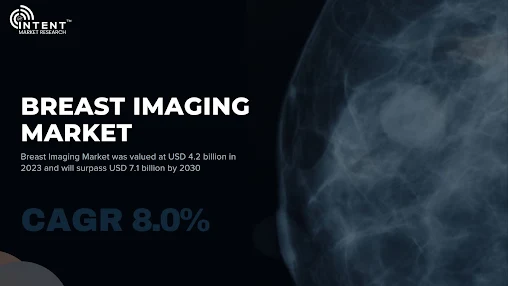Polyurethane foam, a versatile and essential material, is experiencing a notable surge in demand across various sectors. The market for this innovative substance is projected to grow from USD 47.0 billion in 2023 to USD 70.7 billion by 2030, reflecting a robust compound annual growth rate (CAGR) of 6.0%. This growth underscores the material's increasing significance and its broad applications in different industries.
Understanding Polyurethane Foam
What is Polyurethane Foam?
Polyurethane foam is a polymer that has been used for decades in a range of products, from furniture and insulation to automotive components. It is created by reacting polyols and isocyanates, which results in a foam with varying densities and properties.
Types of Polyurethane Foam
Flexible Foam
Flexible polyurethane foam is widely used in the furniture industry for cushioning. Its ability to conform to different shapes makes it ideal for mattresses, seat cushions, and other comfort-focused products.
Rigid Foam
Rigid polyurethane foam, known for its excellent insulating properties, is commonly used in construction and refrigeration. It provides high thermal resistance and contributes to energy efficiency in buildings.
Download Sample Report @ https://intentmarketresearch.com/latest-reports/polyurethane-foam-market-3600.html
Market Drivers
Increasing Demand in Construction
The construction industry is one of the primary drivers of the polyurethane foam market. Its use in insulation and soundproofing materials has become essential in modern construction projects, driven by the need for energy efficiency and environmental sustainability.
Growth in Automotive Industry
The automotive sector is another significant contributor to the market. Polyurethane foam is utilized in various vehicle components, including seats and interior panels, due to its lightweight and energy-absorbing characteristics.
Advancements in Technology
Technological advancements in polyurethane foam production have led to improved performance and new applications. Innovations such as high-resilience foams and eco-friendly formulations are pushing the market forward.
Market Trends
Sustainable and Eco-Friendly Solutions
As environmental concerns grow, there is a shift towards sustainable polyurethane foam products. Manufacturers are focusing on reducing the environmental impact by developing bio-based and recyclable foams.
Innovations in Foam Production
Continuous research and development are leading to new and improved foam types with enhanced properties. Innovations such as flame-retardant foams and those with superior durability are becoming increasingly prevalent.
Shift Towards Customization
Consumers are increasingly seeking customized foam solutions tailored to specific needs, whether for home furnishings or industrial applications. This trend is driving manufacturers to offer more personalized products.
Regional Analysis
North America
Market Trends
North America holds a significant share of the polyurethane foam market, driven by a strong demand from the construction and automotive sectors. The region is also a leader in technological advancements and innovations in foam production.
Key Players
Major companies in North America include Dow Chemical, Huntsman Corporation, and BASF. These players are investing in research and development to maintain their competitive edge.
Europe
Market Trends
Europe is witnessing growth in the polyurethane foam market due to stringent energy efficiency regulations and increasing use in the automotive and construction industries.
Key Players
Key players in Europe include Covestro, Recticel, and SABIC. These companies are focusing on sustainable and high-performance foam solutions.
Asia-Pacific
Market Trends
The Asia-Pacific region is expected to experience rapid growth, driven by industrialization, urbanization, and increasing infrastructure development.
Key Players
Leading companies in this region include Mitsui Chemicals, Tosoh Corporation, and Carpenter Co. They are capitalizing on the region's growing demand for both flexible and rigid foams.
Latin America and Middle East & Africa
Market Trends
In Latin America and the Middle East & Africa, the market is growing steadily due to rising construction activities and improvements in automotive manufacturing.
Key Players
Companies like Armacell, Urethane Products Corporation, and Future Foam are active in these regions, focusing on expanding their market presence.
Competitive Landscape
Major Players in the Market
The polyurethane foam market features several key players, including BASF, Dow Chemical, and Covestro. These companies are engaged in continuous innovation and strategic partnerships to maintain their market leadership.
Strategies and Market Share
The competitive landscape is characterized by mergers, acquisitions, and strategic alliances aimed at expanding product portfolios and geographic reach.
Recent Developments and Innovations
Recent developments include advancements in eco-friendly foam technologies and new applications in emerging industries. Companies are also exploring new markets to leverage growth opportunities.
Challenges and Restraints
Raw Material Prices
Fluctuations in raw material prices can impact production costs and profitability. This is a significant challenge for manufacturers who need to manage cost-effectiveness while maintaining product quality.
Environmental Regulations
Stringent environmental regulations are driving the demand for sustainable foam solutions. However, compliance with these regulations can increase operational complexities and costs.
Market Saturation
As the market matures, there is a risk of saturation, particularly in developed regions. Companies need to innovate continuously to differentiate themselves and capture market share.
Access Full Report @ https://intentmarketresearch.com/request-sample/polyurethane-foam-market-3600.html
Future Outlook
Forecast for 2024-2030
The polyurethane foam market is expected to continue its upward trajectory, with growth driven by technological advancements, increasing industrial applications, and rising demand for sustainable solutions.
Emerging Opportunities
Emerging opportunities include the development of high-performance and eco-friendly foams, as well as expansion into untapped markets.
Expected Technological Advances
Future technological advances are likely to focus on improving foam properties, reducing environmental impact, and enhancing production efficiency.
Conclusion
In summary, the polyurethane foam market is on a strong growth path, fueled by diverse applications, technological innovations, and increasing demand for sustainable solutions. As the industry evolves, key players will need to adapt to changing market dynamics and continue driving innovation to stay ahead.
Contact Us
sales@intentmarketresearch.com
US: +1 463-583-2713









